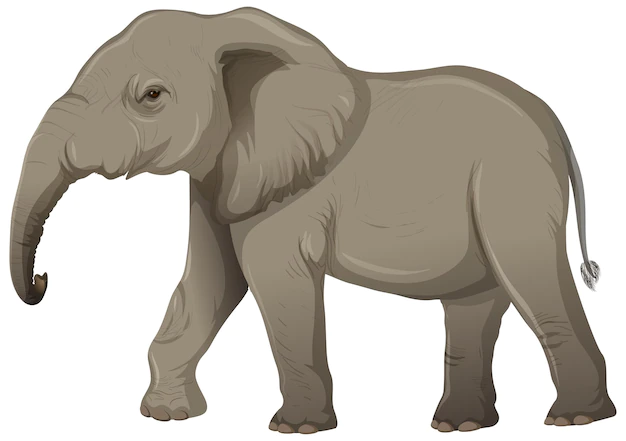Essay on Elephant for Students and Children in English
Introduction
Elephants are one of the most majestic creatures on Earth, and their size is just one of the reasons why they’re so impressive. In this essay, we’ll talk about some of the things that make elephants so special, and we’ll also share some of our personal experiences with these amazing animals. Enjoy!
Description of an Elephant
Elephants are some of the most impressive and intelligent creatures on Earth. Not only are they massive, but they also have enormous brains for their size. They are known for their loyalty and patience, which has led to their being used in many different ways throughout history. Elephants are sometimes used in circuses, where they perform tricks such as riding bicycles.
Classification of Elephants
Elephants belong to the order Proboscidea and are classified into three groups: African forest elephants, Asian elephants, and South American elephants.
African forest elephants are the largest of the three elephant species and can be found in dense rainforests throughout Africa. They have short tusks that are used to break open vegetation for food.
Asian elephants are found in tropical and subtropical forests throughout Southeast Asia, including India, Sri Lanka, and parts of China. They have long tusks that they use to dig for food underground.
South American elephants are the third largest of the three elephant species and are found in moist lowland habitats throughout South America. They have shorter tusks that they use to pull branches and roots out of the ground.
Behavior of Elephants
Elephants are one of the most popular animals in zoos and circuses, and they are known for their gentle demeanor, large size, and mighty trunk. Despite this popularity, there is much that is still unknown about the behavior of elephants.
There are two main types of elephant behavior: Social behavior and individual behavior.
Elephant Social behavior refers to how an elephant interacts with other elephants, and individual behavior refers to the ways in which an elephant behaves when it is alone.
Social Behavior
Social behavior is one of the most important aspects of elephant life. Elephants live in groups, and they need to interact with each other to survive. When elephants are young, they learn how to interact with other elephants by watching them. As they grow older, they learn how to communicate with each other using body language and vocalizations.
Elephants do things when they are together, including socializing, feeding, playing, and defending themselves against threats. Elephant socialization can be divided into infancy, juvenile, and adulthood. Infant socialization involves learning how to interact with others, while juvenile socialization involves learning how to establish relationships and interact with others in a meaningful way. Adulthood socialization involves learning how to handle challenging situations.
Elephant Individual Behavior
Individual behavior refers to the ways in which an elephant behaves when it is alone. Individual behavior can be divided into two categories: solitary and social. Solitary behavior refers to the ways in which an elephant spends its own time without interacting with other elephants. Social behavior refers to the ways in which an elephant interacts with other elephants.
Some of the things that elephants do when they are social include feeding, drinking, playing, and moving around. Elephants usually walk or run slowly when they are socializing. They may also trunk each other or touch each other’s heads or torsos. Elephants may also rub their bodies against each other or lie down next to each other.
There is much that is still unknown about the behavior of elephants. However, research has shown that they are social animals that need to interact with others in order to survive.
Importance of Elephant

Elephants are considered to be one of the most important animals in the world. They play a vital role in the ecosystems throughout Africa and Asia and are integral in transporting goods and people. Elephants are also highly revered for their beauty and strength.
There are several reasons why elephants are so important. For starters, they play a crucial role in the ecosystem by clearing vegetation and carrying away debris, which helps maintain healthy ecosystems. Furthermore, elephants help to regulate populations of other animals by killing predators that would prey on smaller prey. Finally, elephants are used as tourist attractions, which helps to generate revenue for local economies.
In short, elephants deserve our utmost respect for their vital role in the world economy and ecological systems.
Uses of Elephants by Humans
Humans use elephants for many reasons. Some of these reasons are that they can carry a lot of weight, move quickly, and stay calm under pressure. Here are some other things that elephants can do for humans:
-They can be used as working animals in factories, farms, and logging businesses.
-They are used in the military to carry supplies and troops.
-They are used in circuses to perform tricks.
Total Elephants Population and Threats
Elephants are one of the largest and most majestic animals on the planet. Unfortunately, their population is declining rapidly due to a number of threats, including poaching, habitat destruction, and climate change. In 2015, elephant populations decreased by 29 percent globally, according to the IUCN Red List of Threatened Species, and the biggest decline was seen in Africa, where populations dropped by 50 percent.
The biggest threat to elephant populations is poaching for their ivory. The illegal ivory trade has exploded in recent years, with an estimated 30,000 elephants killed for their tusks between 2009 and 2014. Poaching is also done for their meat, skin, and other parts sold on the black market.
Ivory trafficking has created a substantial financial incentive for poachers, who now make more money from selling ivory than from hunting elephants. In some cases, organized crime groups have become involved in the ivory trade, moving it from country to country and laundering the proceeds. This has created an even bigger challenge for law enforcement, as tracking these criminals becomes increasingly tricky.
There are also a number of other threats to elephant populations, such as habitat destruction due to deforestation and agricultural development, disease outbreaks, collisions with vehicles and powerlines, and trampling by humans.
There are some simple things that we can all do to help save the elephant population:
- We can start by using less plastic and supporting policies that reduce the use of plastic.
- We can support conservation efforts that protect elephant habitats and help prevent poaching.
- We can help raise awareness about the plight of elephants and their importance to the planet.
The Ivory Trade
The ivory trade is the trade of ivory from wild elephants to legal ivory products. The African elephant is the species most commonly targeted for ivory poaching, with an estimated 1.3 million African elephants killed between 2010 and 2014.
CITES has banned the global trade in ivory since 1989, but this ban has not stopped poaching and trafficking in illegal ivory. The demand for ivory has come from China, Japan, South Korea, Thailand, and Vietnam, where it is used in traditional medicine and as a valuable commodity.
Legal Ivory
In 2013, the global market for legal ivory products was worth $2.7 billion. This market includes items such as carvings, jewelry, ornaments, and figurines. Sales in Asia generate the majority of this market.
Illegal Ivory
The illegal ivory trade has remained unchanged over the past 25 years despite the global ban on its sale. The main reason for this is the high price of legal ivory relative to the price of illegal ivory. The high price of legal ivory products makes it difficult for poachers to make a profit from their activities.
Several efforts are being made to address the illegal ivory trade. These efforts include:
– Operation Cartwheel: This operation is run by the United States Fish and Wildlife Service (USFWS) and aims to reduce poaching in central Africa.
– The African Elephant Conservation Society (AECS) – AECS is a non-profit organization that works to protect the elephant population in Africa.
– The Save the Elephants Campaign – This campaign is run by WWF and focuses on raising public awareness about the importance of elephants.
Conservation Efforts for Elephants
There are a variety of conservation efforts being made to protect elephants, both in the wild and in captivity. One of the most important ways to protect elephants is through habitat restoration. Elephant populations have declined by more than 60% over the past thirty years, and significant habitat loss is believed to be one of the leading causes. Habitat restoration efforts help restore elephant habitats and help protect them from further destruction.
Another important way to protect elephants is through education. Many people don’t realize just how important elephants are to their environment, and we must educate others about the importance of these animals. We can also contribute to elephant conservation by choosing environmentally friendly products.
Interesting facts about Elephant
- Elephants’ bodies are covered in hair.
- African elephants are the world’s largest terrestrial mammals.
- Elephants can swim and breathe in deep water using their trunks as a snorkel.
- Asian elephants with tusks are only males.
- Elephants’ tusks develop over their lifetime. The tusks are extremely heavy, weighing up to 200 pounds.
- The only creature that cannot jump is the elephant.
- It takes 22 months for an elephant to give birth.
- The elephant is Thailand’s national animal.
- The trunk of an elephant can hold 2.5 gallons of water.
- Elephants are known to be capable of learning over 60 commands.
- A tooth from an elephant can weigh up to three kilograms.
- An elephant can consume 1000 pounds of plants in 24 hours in the wild.
- An adult elephant may drink 220 liters of water every day.
- The elephant trunk can be used as a nose, a hand, an extra foot, a signaling device, and a tool for obtaining food, siphoning water, dusting, excavating, and other tasks.
Conclusion
Elephants are perhaps one of the most popular animals in the world, and for a good reason. They are gentle giants that have been around for centuries and have played an important role in human society. Sadly, their numbers have declined dramatically in recent years due to poaching and other threats to their well-being. I hope this article has given you a better understanding of what is happening to elephants and why we should all try to do whatever we can to help protect them.
Hey kids, how much did you like Essay on Elephant for Students and Children in English? and Also Read Our Most Popular Story Elephant and Friends Please share your view in the comment box. Also, please share this story with your friends on social media so they can also enjoy it, and for more such stories, please bookmark storiespub.com.
Suggested Article –
- An Essay on Diwali | Deepawali the Festival of Lights
- 1000 word essay on Mahatma Gandhi in English
- Essay on Environment for the Students in English
- Air Pollution Essay for the Students
- Essay on Child Labor for Students and Children
- Essay on My School for Students
- Essay on Newspaper
- Tree Essay for Students and Children





